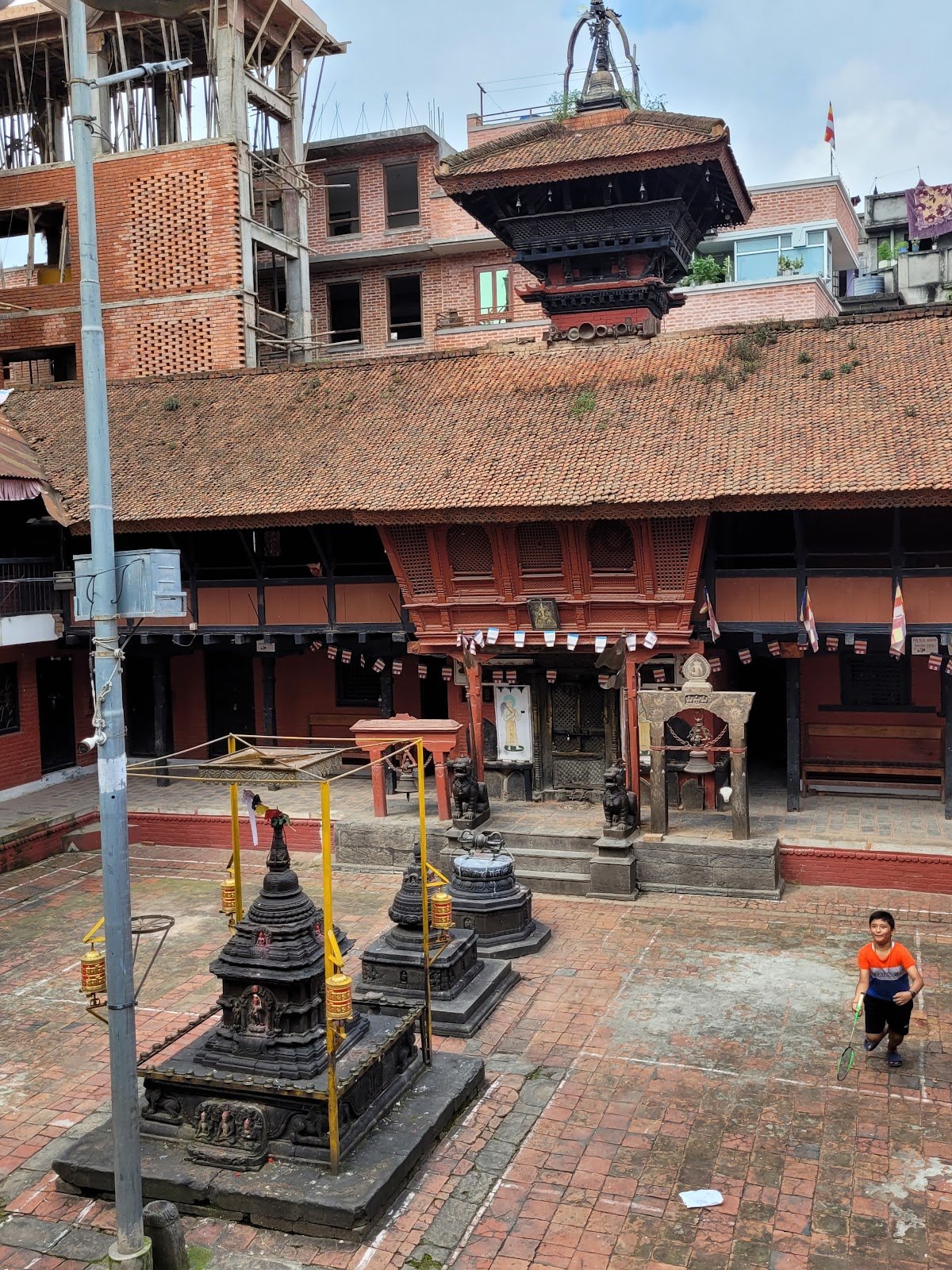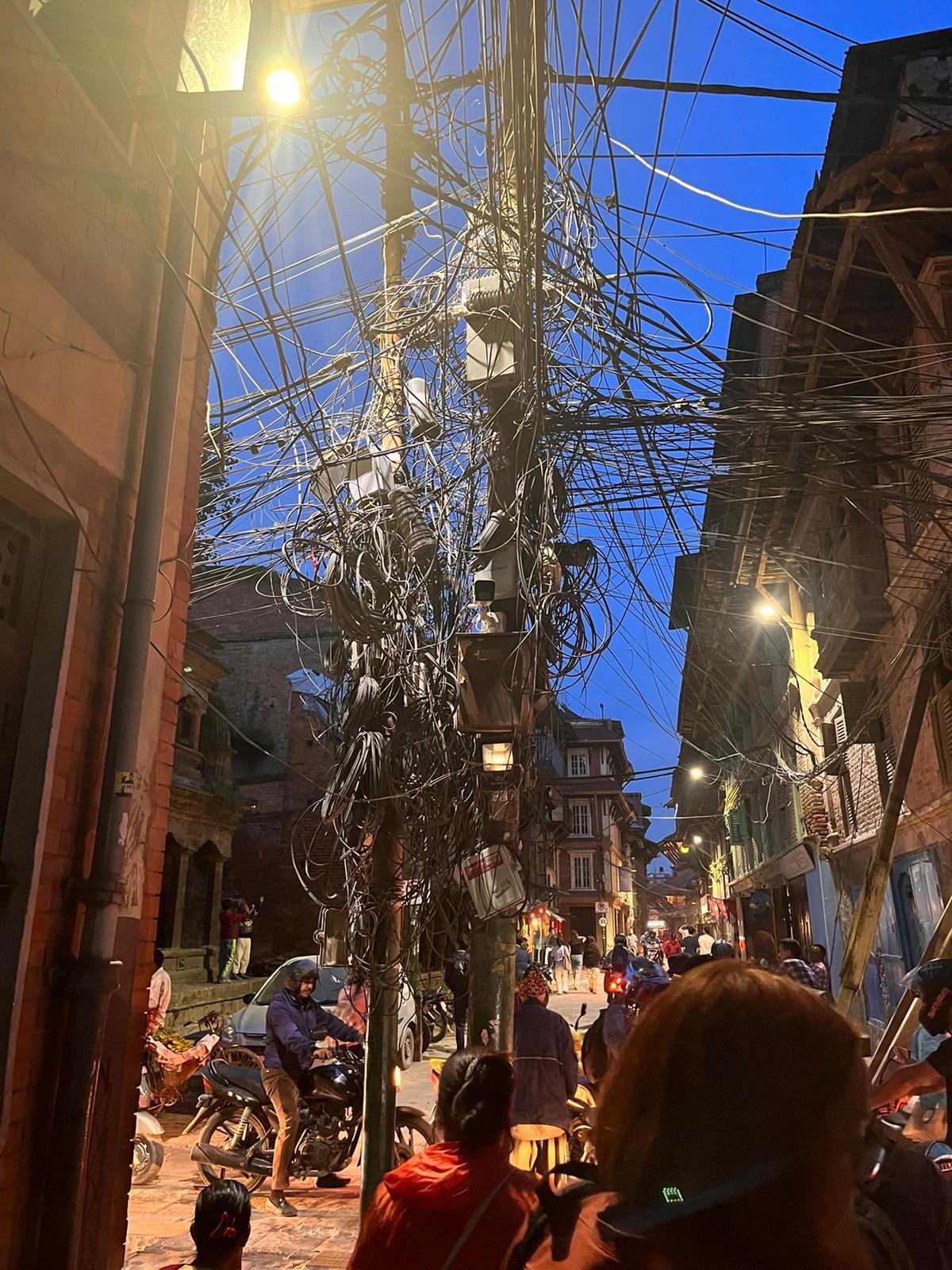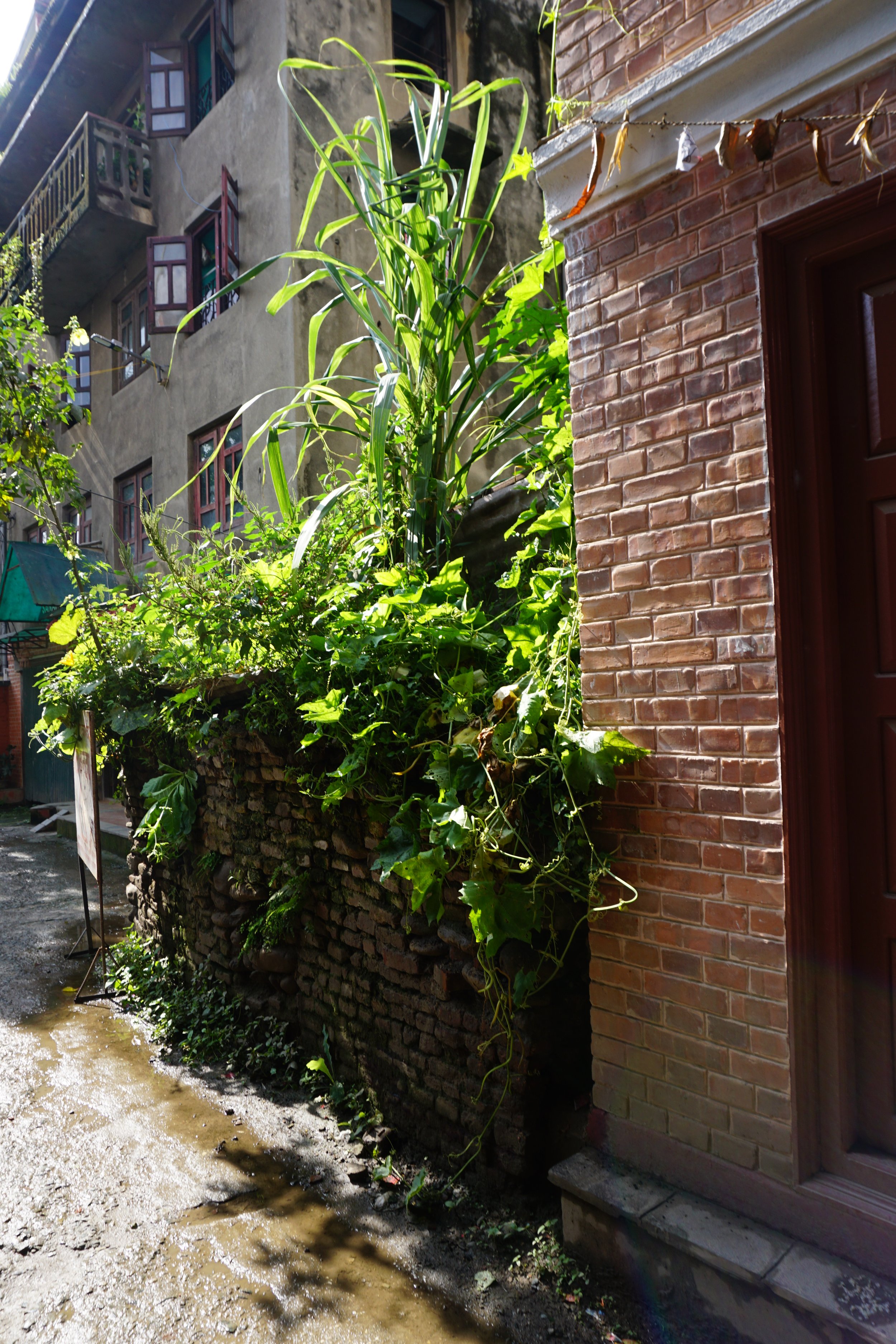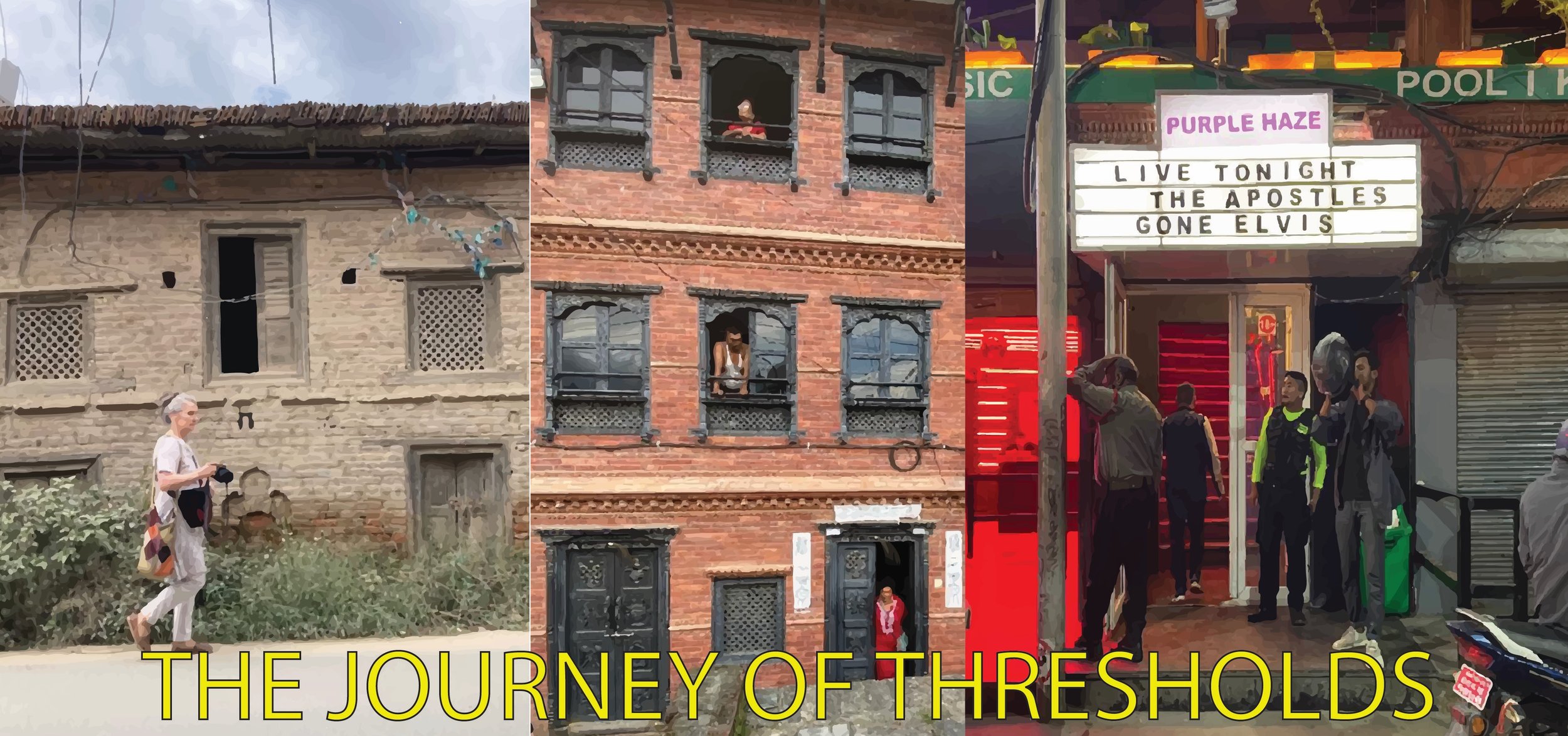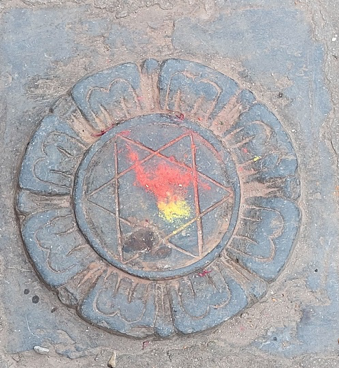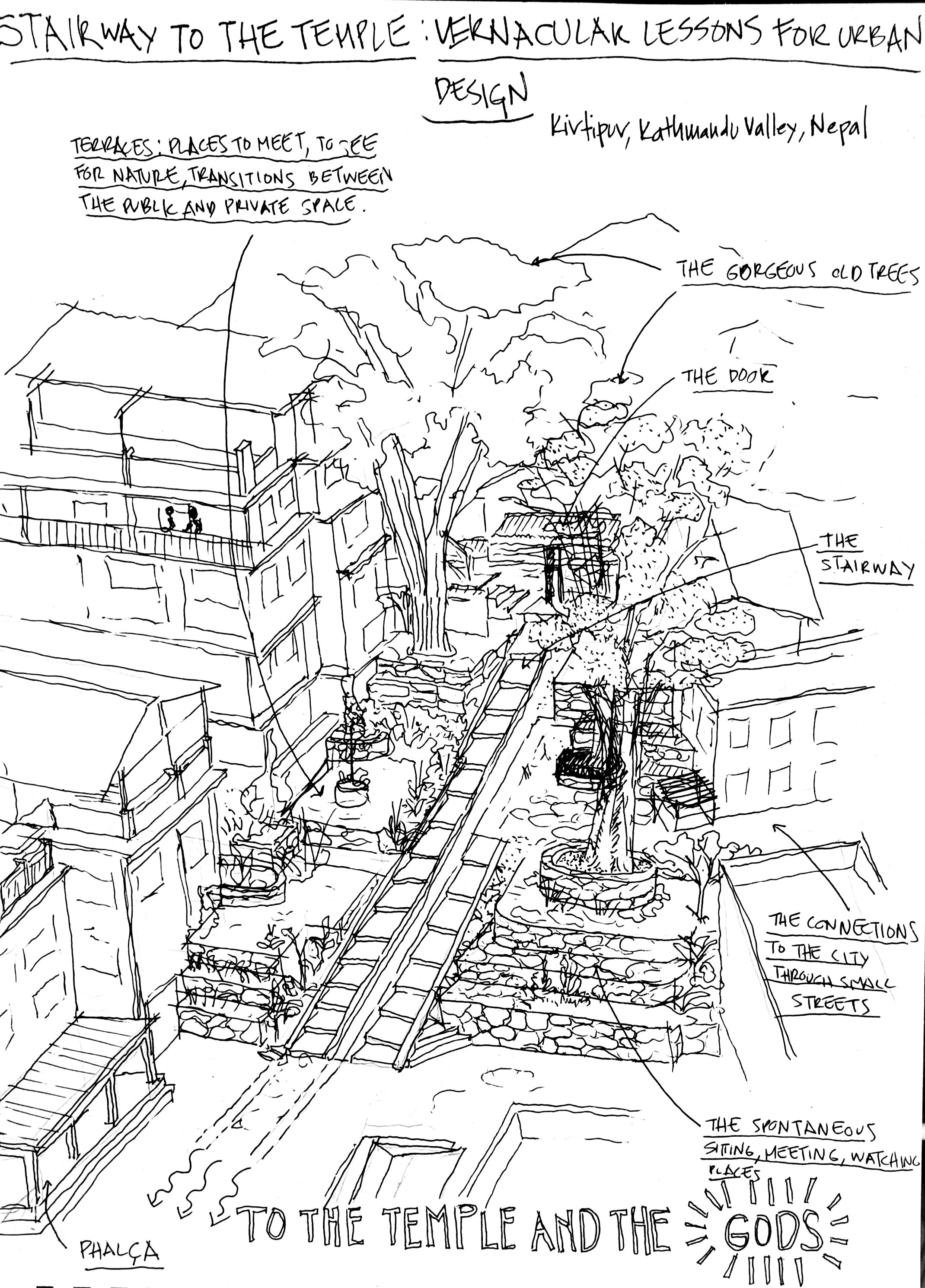Harish Arupula is an architect and currently pursuing his masters (M Arch.) in Urban Design at the School of Planning and Architecture (SPA) in New Delhi. His research interests are inclusive design of the public realm, placemaking, built- and nature interface, people-centric design, and design of sustainable neighborhoods.
“WATER MATTERS” Street art on a concrete wall adjacent to a temple. Patan, September 2022. Photo: Harish Arupula.
“WATER MATTERS” Street art on a concrete wall adjacent to a temple, with a man standing in front. Patan, September 2022. Photo: Harish Arupula.
While on a community heritage walk in Patan with the Rupesh Shresta team, I came across this diverse community assemblage in Patan, on one corner of a small open space, where we can experience both old heritage (in the form of a temple) and modern graffiti art on a concrete wall at the back of this temple. There, I stopped myself and observed the diverse transformation of cultural expressions of art and heritage through this space.
The people's cultural association in the community with heritage temples and heritage practices is still evidently strong, but at the same time, we can see community adaptation of new cultural arts into their modern life as per the change of time and lifestyle.
The transformation between these two cultural expressions of heritage and Modern art struck me in this place. The amalgamation of two diverse cultural art forms being at one place is unusual, especially in a space of traditional heritage, where people's community has a sense of association with and emotional belonging to their heritage and culture. That the community accepts modern graffiti art at the same time seems to me a rare combination within tight-knit cultural communities. The community adopted both cultural art forms, and in this way displays respect to the authentic traditional built heritage while also inviting modernity into their cultural spaces, without any clash between the cultural beliefs of the community.
We can see people's sense of recreation in this diverse space. There is a raised sitting space at the edge of the building, where people are sitting for their recreation and leisure around this diverse cultural heritage. Modern art that depicts people is accepted and adapted here. We can see people of all age groups gathering and having their sense of belonging to their traditional small temple spaces, mainly these spaces located at chowks (courtyards) of the community. The combination of a sense of recreation in open public space, a sense of belonging to their culture, and a sense of acceptance towards new street art trends makes this place culturally diverse and vibrant in nature.
The built heritage of this place, namely the temple, expresses its authenticity and cultural significance, with people's emotional association coming throughout the ages with their cultural beliefs and practices.
And the modern graffiti art on the concrete wall expresses the significance of water, which is a basic need of every human in the world and important to conserve for future generations. This diverse cultural space strongly portrays their own individual significance with the change of time. By observing diversity in both cultural art forms, people want to conserve their cultural built heritage and also conserve natural resources, such as water. This is depicted through their modern art expression to create awareness in the community.




